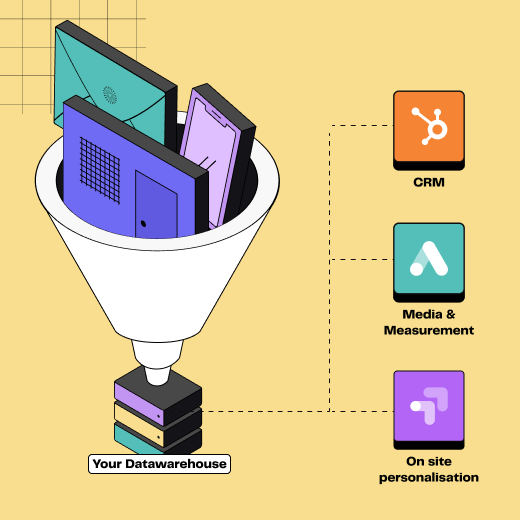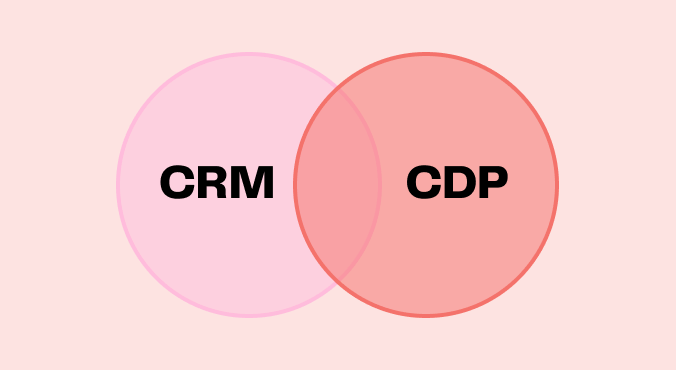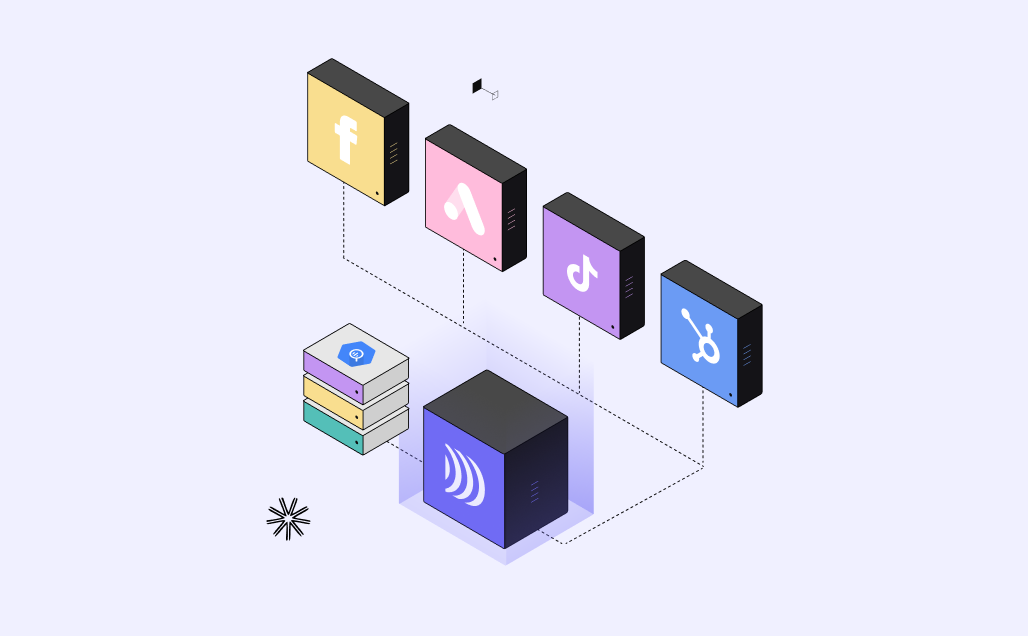
What strategies can be used to optimize customer acquisition?
7min • Dec 14, 2023

Alexandra Augusti
Strategy & Operations Manager
It is an undeniable fact. Advertising techniques today are much more aggressive and intrusive than before. On the street, on television, on social media, every day, a person is exposed to thousands of messages.
Standing out from the competition and successfully capturing the attention of potential customers is no small feat. Moreover, according to a MIT study, the cost of acquiring new customers can be up to 16 times higher than that of retaining current customers.
A good customer acquisition strategy is essential to prevent costs from skyrocketing.
But how to do it? Let's focus on the best online strategies that reduce customer acquisition costs (CAC) and increase conversion rates.
Customer Acquisition, What Is It?
For a business, defining its acquisition strategy involves choosing the means and tools to attract new customers and retain them. A successful strategy converts a prospect into a lead, and then into a customer.
Acquisition strategies can be broad, encompassing marketing, sales, and communication actions. The possibilities are huge and must be adapted based on the size, sector, and resources of the company.
However, knowing your leads and their buying journeys remains key. The more precisely you target the needs of your potential buyers, the higher your conversion rate. It is therefore essential to have defined your target in advance to your maximize knowledge.
At DinMo, we are convinced that the data warehouse is essential to meet this challenge. It serves as a single source of truth, containing all the information you need to address your target: favorite channels, viewed products, preferred marketing content, etc. Relying on comprehensive and up-to-date information surely optimizes acquisition campaigns.
Next, we'll mainly focus on tools, channels, and techniques that contribute to improving the visibility and attractiveness of a product or a brand, and therefore its customer acquisition.
A classic one: SEO (Search Engine Optimization)
Natural referencing, also known as Search Engine Optimization (SEO), is an essential lever if you want to increase the organic traffic to your website. This traffic costs you almost nothing and can bring in highly qualified leads! It would be a shame to miss out.
To appear in the results of Google (or other search engines), it is essential to master the basics of SEO:
Optimize the technical performance of your website (loading time, Internet cache, CDN, etc.).
Select relevant keywords that ideally generate qualified traffic (preferably with an intention to purchase).
Regularly produce quality content, for example, writing blog articles (if relevant to your business).
Monitor your website and anticipate traffic drops.
To analyze and understand your SEO results, you can use tools such as Google Search Console or Google Analytics, which allow you to know the search keywords that led a prospect or customer to you.
SEO requires time and investment but increases visibility. Regular and quality content attracts potential future customers and is essential in any acquisition strategy.
The Nice to Have: SEA (Search Engine Advertising)
SEA, Search Engine Advertising, differs from SEO in that it is paid. It is based on a keyword bidding system, where you pay search engines to appear among the first results for specific terms. Google Ads is obviously the most used tool for this type of advertising.
💡 If you missed it, don't hesitate to check out our Google Ads best practice guide.
Of course, the more competitive the market, the higher the cost. It is therefore crucial to position yourself on specific keywords that can generate qualified traffic without drastically increasing your average acquisition cost.
SEA allows you to target your audiences with marketing content specifically created for them. By relying on Customer Lists, you can choose the people to whom your ad should be shown, as well as those to exclude. Creating multiple campaigns is therefore relevant to deliver the right message to the right audience. You can even conduct AB testing to measure your results.
A classic use case is excluding existing customers from "brand" campaigns. You can assume that someone already familiar with your brand and intentionally searching for your company name has a low risk of looking elsewhere. Yet, thousands of dollars are spent on these people, even though they bring nothing to your business. Without sponsored links, they would have visited your website or made a purchase just as much.
This case may seem basic, but impressive results can follow. We observed a 20% average decrease in the cost of acquisition (CAC) among our clients that had not implemented this strategy before. Discover, for example, how Ankorstore implemented audience strategies thanks to DinMo.
At DinMo, we are convinced that audience creation should be as simple as possible. That's why we created our Audience Manager, which allows anyone to access customer and prospect data, create a lead segment, and send it to Google Ads in a few clicks. Our platform allows you to analyze campaign results and iterate quickly to extract maximum value.
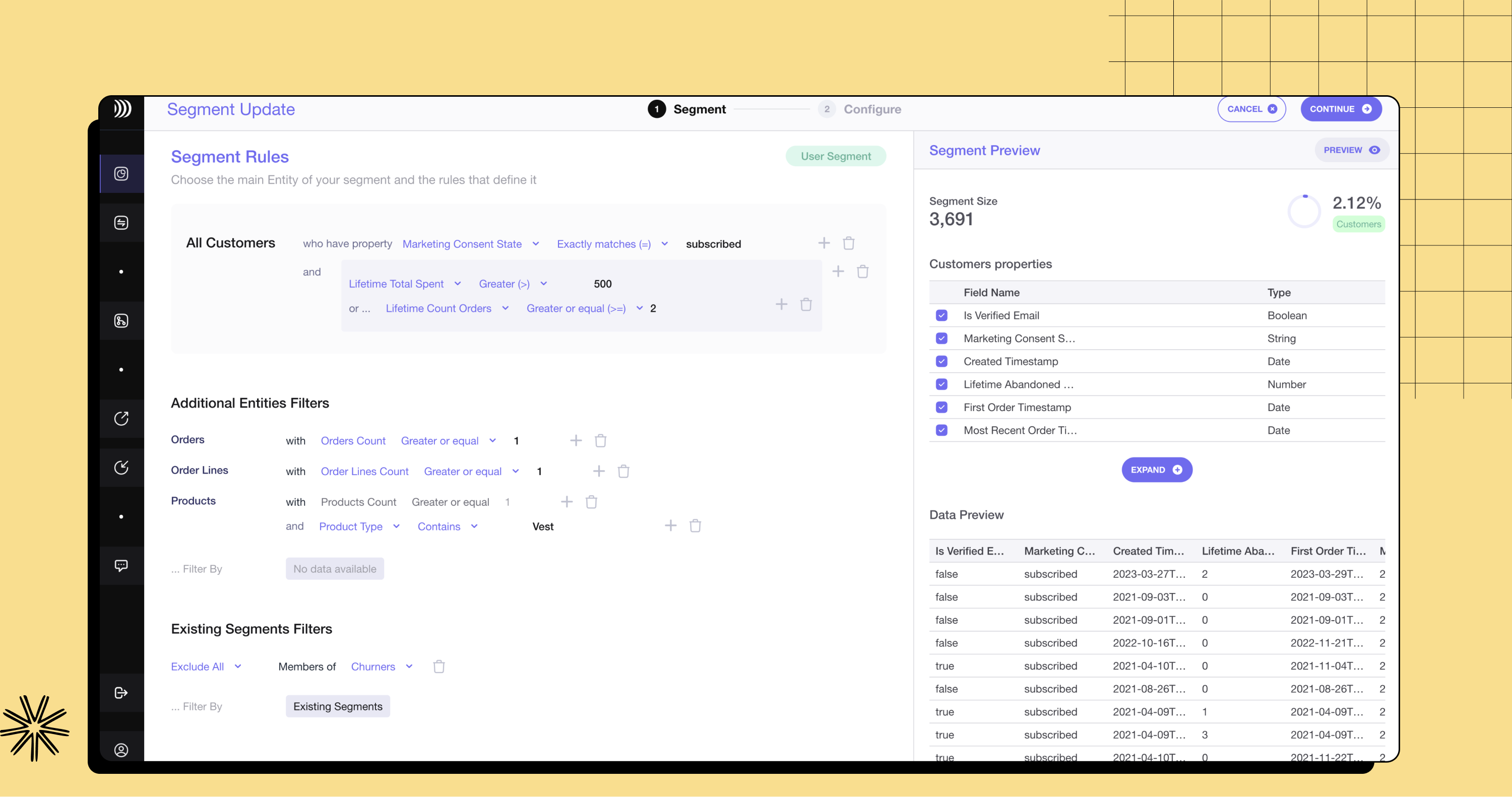
Our Visual Audience Builder
Adapting your marketing message to your target is already a good practice. But your acquisition efforts cannot reasonably stop here. To improve your results, it is also essential to understand the different bidding options of Google Ads and use them wisely.
Indeed, search engine algorithms exclusively aim to achieve the goal you have specified to them (such as the best possible click-through rate) and do not pay particular attention to the quality of the leads. You must give them a specific goal and make them understand who your best customers and/or leads are. A switch from lead management to qualified lead management can drastically change the results of a campaign, as our Nexity case study shows.
can drastically change the results of a campaign, as our Nexity case study shows.
But how to do it? For this:
Define the goal of your marketing campaign and make different bids between your prospects and existing customers. A higher bid on leads for an acquisition campaign is key.
Send all your conversions to Google Ads, whether they occurred online or in-store, to provide a 360° view of your prospects. This practice also avoids unnecessary expenses on prospects who have recently made an in-store purchase (thus now being customers).
Assign higher values to conversions at the end of the customer journey (for example, creating an account has more value than a simple click).
Adjust your conversions to drive at real value (rather than margin).
Sending and adjusting the value of your conversions can be complex, especially if they did not occur online. That's why we have developed a connector with Google Ads to make it easier for you and focus only on your results.
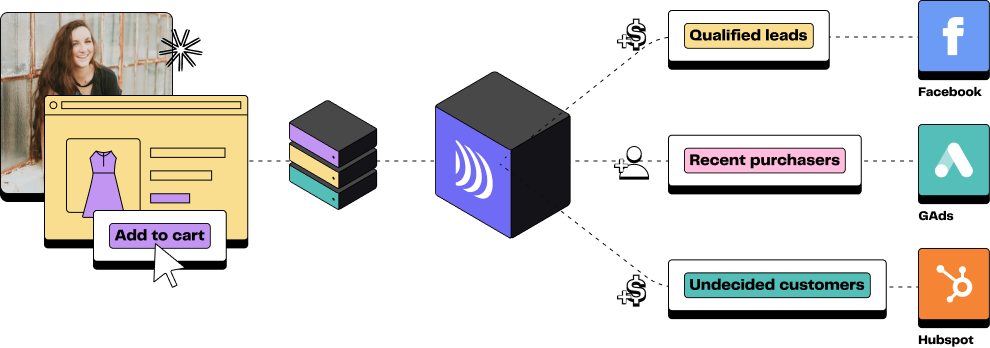
DinMo can sent all conversions to any platform
To measure the results of your campaign, several KPIs can be tracked:
Impressions
Click-through rate and average cost per click
Conversion rate
Cost of acquisition (CAC)
A Must: Social Media
With an average daily usage time of around 2 hours, social media is a perfect showcase for businesses. They allow both customer loyalty (through contests, for example) and lead generation. Like SEO, being present on social media and posting quality content takes time, but it can pay off.
All advertising platforms offer paid services to push sponsored content to users. Here again, segmentation is key and determines the success of marketing campaigns.
On social networks, retargeting is even more essential than in SEA to improve conversion rates.
To improve customer acquisition, a key strategy is to use "Lookalike" campaigns. These will target people similar to your best customers, ensuring that you directly reach qualified leads. Their conversion probability is therefore higher. Again, this strategy is basic but can significantly reduce acquisition costs.
To do this, you must start by defining who your best customers are: people who have made n purchases, representing x% of your sales, who have bought a particular product, etc. Once the segment is created in DinMo, you can send it to your advertising platforms in a few clicks.
👉🏼 Check our resource if you want to learn more about Facebook Custom Audiences best practices
A Timeless Method: Email Marketing
Used for a long time, email marketing remains an effective lever for customer acquisition. However, it must be used wisely and intelligently. An effective email marketing strategy cannot be improvised and must rely on a clean prospect database. The current stage of the sales cycle must be specified. Here again, we recommend using a data warehouse to have a single source of truth about your customers/leads.
Personalizing content is essential to attract potential future buyers. A promotion for an abandoned product in a cart, a reminder for an unfinished activity, advice and services on a specific topic—everything can be considered to reactivate a dormant prospect. It's all about engaging your customers!
Yet, the trend today is more towards automation. Fortunately, the two practices are not contradictory, and several tools can help you create automated marketing processes. Marketing automation allows you to save considerable time while increasing your acquisition rate and decreasing your costs.
At DinMo, we support you in managing and monitoring your opportunities through integrations with all your CRM and marketing automation tools, custom lead or customer scoring methods, and calculated sales predictions. We help you prioritize your prospects to convert as many as possible into customers.
Other Levers
Other means can help improve your customer acquisition.
If you operate in B2B, content marketing can be very effective in attracting the attention of potential customers and gaining their trust. It simply involves disseminating content about your company and your ecosystem. This can take the form of a newsletter, blog articles, webinars, or podcasts, for example.
Through a content marketing strategy, you aim to achieve several objectives:
Increase your online visibility
Attract new prospects
Loyalty of your audience and existing customers
Partnerships, customer testimonials, and free trials are other acquisition strategies you can consider. The most important is to test and measure results (compared to costs) to define how to optimize your operations.
Conclusion
It is essential to conceive a customer acquisition strategy holistically. Marketing interactions multiply to the point that a prospect generally contacts a brand about twelve times before converting. Each lever can no longer operate separately.
Implementing continuous monitoring improves your acquisition strategy, optimizes your process, and reduces your costs. Evaluating your marketing performance identifies the most profitable channels and strategies for acquisition.
At DinMo, we dream of a world where all customer and prospect data is exploited by all teams to support the growth of their business. We connect to any data warehouse and allow you to activate data on all platforms (marketing, advertising, CRM, etc.) to acquire new customers. All without the need for technical skills and in a few clicks!
You want to know more about customer acquisition or get personalized advice on a specific topic (SEA, marketing automation, or advertising platforms)? Feel free to contact us; we would be delighted to assist you.
You can also check out our other blog articles to learn more about best practices in customer acquisition.













